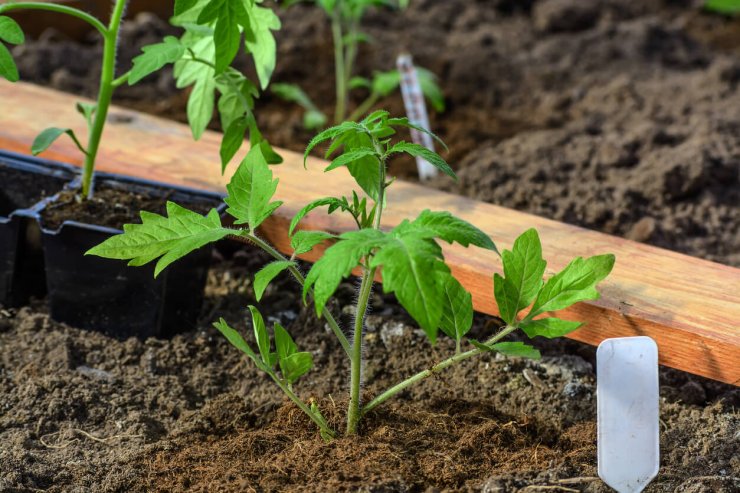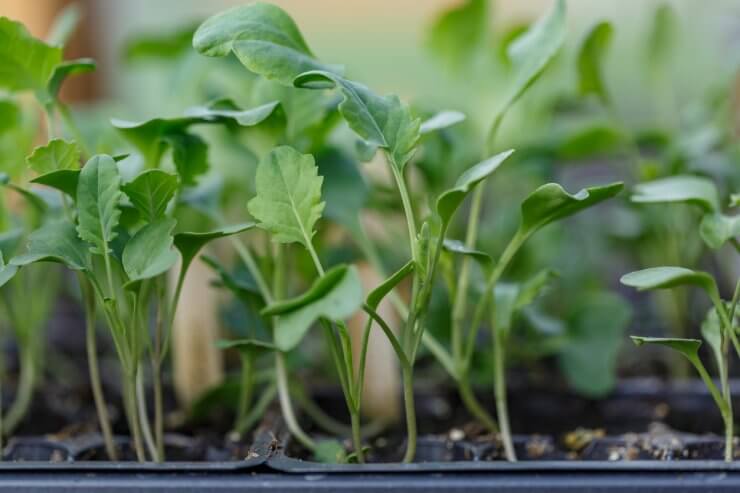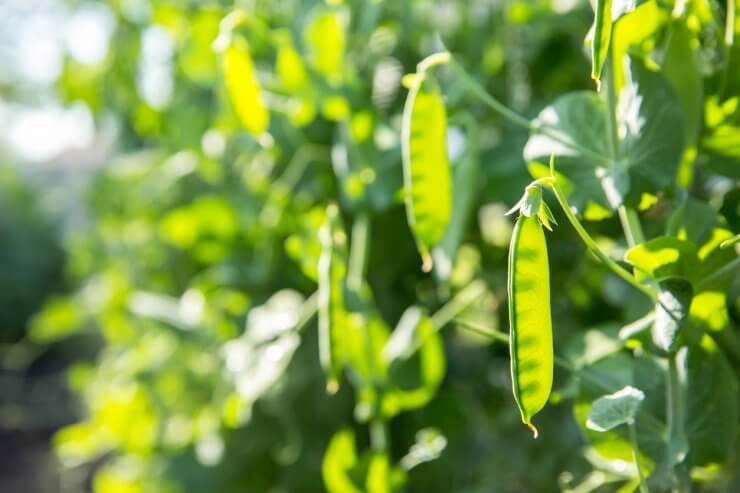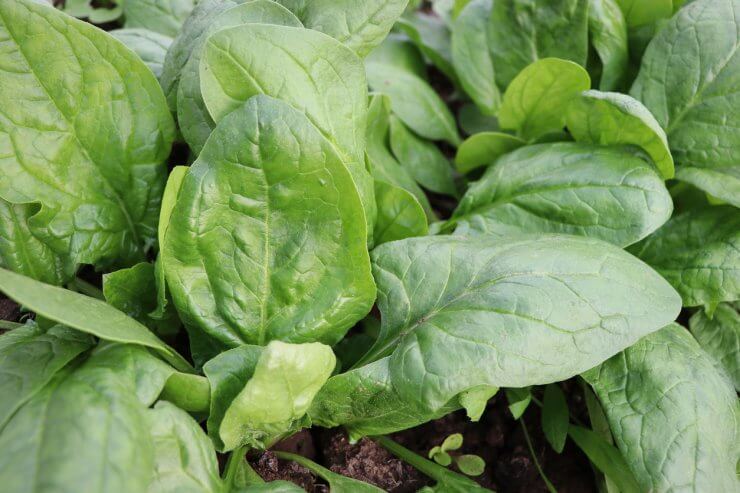
February in zones 7-8 brings average temperatures ranging from 25°F to 45°F (-4°C to 7°C), with those teasing warm spells that hint at spring around the corner. While your garden soil might still be too chilly for direct sowing, your moderate winters offer opportunities that colder zones can only dream about. In these zones, your average last frost date typically falls between March 15-April 15, with zone 7 closer to April 15 and zone 8 often frost-free by late March.
Those surprise warm days might tempt you to start planting outside – but stick with indoor growing for most crops. Your zone’s relatively mild winters do give you a head start on seed starting compared to your northern gardening friends, and you’ll be glad you waited for warmer soil.
So gather your seed-starting supplies, set up your grow lights, and let’s get growing! While winter isn’t quite finished with us yet, we can definitely get a jump start on spring.
What to Plant Indoors in February
If you’re in zone 7 (April 15 last frost), February is prime time to start several vegetables indoors. For zone 8 (March 15 last frost), you’ll want to have many of these already growing from January starts. Here’s what you can start sowing now:

Peppers (10-12 weeks before last frost)
- Zone 7: Start early-mid February
- Zone 8: Should be growing from January starts
- Hot peppers like ‘Hungarian Wax’ and ‘Early Jalapeno’
- Sweet peppers like ‘California Wonder’ and ‘King of the North’
Peppers are notorious slow-pokes when it comes to germination and growth, which is why we start them so early. Keep the soil warm (80-85°F) using a heat mat – they’re real heat lovers! Once seedlings emerge, they need strong light and temperatures around 70-75°F. Start fertilizing with diluted liquid fertilizer when the first true leaves appear. These babies are sensitive to cold, so don’t rush to transplant them in spring until soil temperatures warm up consistently to 65°F or higher.

Eggplant (10-12 weeks before last frost)
- Zone 7: Start early-mid February
- Zone 8: Should be growing from January starts
- ‘Black Beauty’ is a reliable classic
- ‘Rosa Bianca’ for something fancyti
- ‘Little Fingers’ for container growing
Like their pepper cousins, eggplants need warm soil to germinate and plenty of light to prevent leggy seedlings. Use a heat mat to maintain soil temperature around 80-85°F. Keep them cozy – these Mediterranean beauties hate cold drafts! Once they have their first true leaves, feed them every two weeks with diluted liquid fertilizer. Don’t be surprised if germination takes 7-14 days – they’re worth the wait. Plan to transplant only when night temperatures stay reliably above 50°F.

Tomatoes (8-10 weeks before last frost)
- Zone 7: Start mid-February
- Zone 8: Start early February
- ‘Early Girl’ for reliable harvests
- ‘Sun Gold’ for sweet cherries
- ‘Better Boy’ for classic slicers
Unlike gardeners in colder zones, you can start your tomatoes in February. Keep soil temperature around 75°F for best germination. Provide strong light once sprouted to prevent leggy seedlings, and use a gentle fan to strengthen stems. Give them a light feeding with diluted liquid fertilizer once true leaves appear. Pot up seedlings when they develop their first true leaves, burying the stems deeper each time to develop strong root systems.

Cole Crops (6-8 weeks before last frost)
- Zone 7: Start late February
- Zone 8: Start early-mid February
- Broccoli varieties like ‘Green Magic’ and ‘Calabrese’
- Cauliflower types like ‘Snow Crown’ and ‘Amazing’
- Cabbage varieties like ‘Early Jersey Wakefield’
These cool-season crops can handle a light frost, making them perfect for early spring planting. Start seeds at around 70°F for good germination, then grow on at cooler temperatures (60-65°F) to prevent leggy growth. Provide strong light and good air circulation. Feed with balanced liquid fertilizer when true leaves appear. These plants can go into the garden 2-3 weeks before your last frost date – they’re tough!
What to Plant Outdoors in February
When soil temperatures reach 40°F and the ground can be worked, you can direct sow these hardy vegetables:

Peas (direct sow mid-February onwards)
- Snow peas like ‘Oregon Sugar Pod II’
- Snap peas like ‘Sugar Ann’ and ‘Sugar Snap’
- Shelling peas like ‘Green Arrow’ and ‘Little Marvel’
Peas are the early birds of the spring garden, happily germinating in soil as cool as 40°F. Plant them 1 inch deep and 2 inches apart in well-draining soil. Consider pre-sprouting indoors between damp paper towels to speed germination – you’ll see roots in just a few days. Install trellises or supports at planting time to avoid disturbing roots later. Protect young seedlings from late freezes with row cover, but don’t worry too much – peas can handle brief dips to 20°F.

Space Hybrid Spinach
Spinach (direct sow mid to late February)
- ‘Bloomsdale Long Standing’ for reliable harvests
- ‘Space’ for smooth leaves
- ‘Winter Bloomsdale’ for extra cold hardiness
Spinach loves cool weather and can germinate in soil as cold as 35°F. Sow seeds ½ inch deep and 2 inches apart in rich, well-draining soil. Keep soil consistently moist until germination, which typically takes 7-14 days in cool soil. Consider using row covers to protect from temperature swings and pests. Harvest outer leaves as needed to extend your harvest season.

Radishes (direct sow late February)
- ‘Cherry Belle’ for quick harvests
- ‘French Breakfast’ for mild flavor
- ‘Easter Egg’ for colorful variety
These speedy growers can be ready in just 21-28 days. Sow seeds ½ inch deep and 1 inch apart in loose, fertile soil. Thin to 2 inches apart when seedlings have their first true leaves. Keep soil evenly moist to prevent woody or split roots. Succession plant every 1-2 weeks for continuous harvests. Once temperatures warm up, provide light shade to prevent bolting and maintain crisp, mild-flavored roots.

Lettuce (under protection)
- ‘Winter Density’ for cold tolerance
- ‘Black Seeded Simpson’ for early harvests
- ‘Rouge d’Hiver’ for cold-hardy red leaf
Start these under row covers or cold frames for best results. Sow seeds very shallowly – they need light to germinate. Keep soil consistently moist and temperatures between 40-65°F. For continuous harvests, sow new seeds every two weeks. Consider planting both head lettuces and leaf types – you can start harvesting leaf lettuces in just a few weeks while waiting for heads to mature.
Continue Growing from January:
If you started these last month, keep nurturing:
Essential February Garden Tasks
Let’s be honest – those warm spells in zones 7-8 can be mighty tempting, but February is still primarily indoor growing season. While your garden starts waking up, there’s plenty to keep you busy:
First up: monitor your indoor garden. Keep grow lights adjusted just above your seedlings, check moisture levels daily (those heat mats can really dry things out!), and maintain good air circulation. Your January-started seedlings might be ready for potting up – watch for the first true leaves as your signal.
Keep an eye on outdoor beds too. Those warm spells might melt snow and expose soil – perfect time to add compost or cover crops where possible. Check your season extenders like cold frames and hoop houses – they can overheat quickly on sunny February days! And don’t forget about winter protection for your perennials when temperatures drop again.
Most importantly, use this time to finalize your spring plans. Those seed catalogs aren’t going to read themselves! Your zone’s earlier spring means you need to be ready when the soil warms up. Now, who’s ready to get growing?
Remember, February might be chilly, but it’s when your garden year really begins. Each seed you start now is a promise of harvests to come. What are you planning to grow this season?


 Previous
Previous

